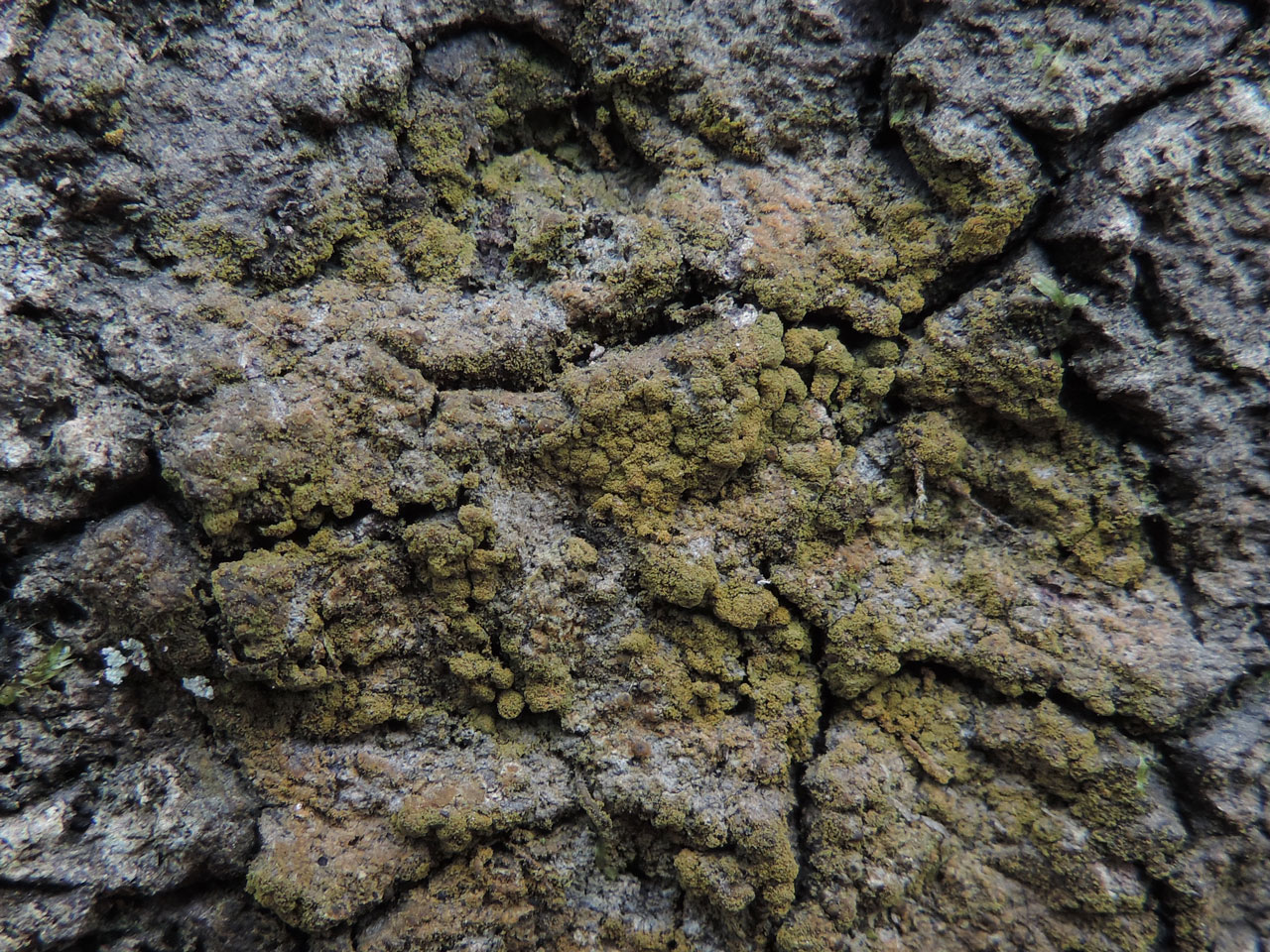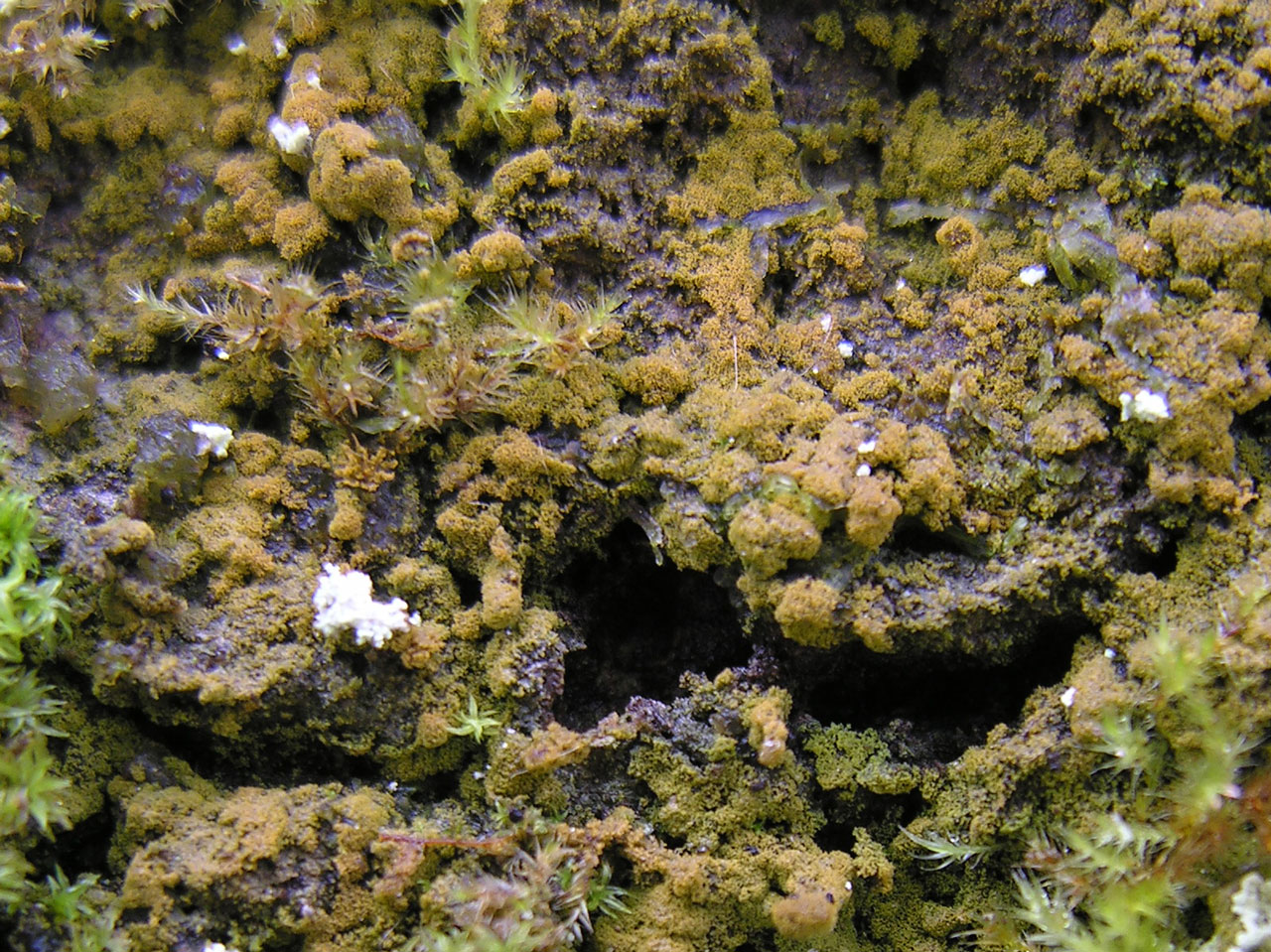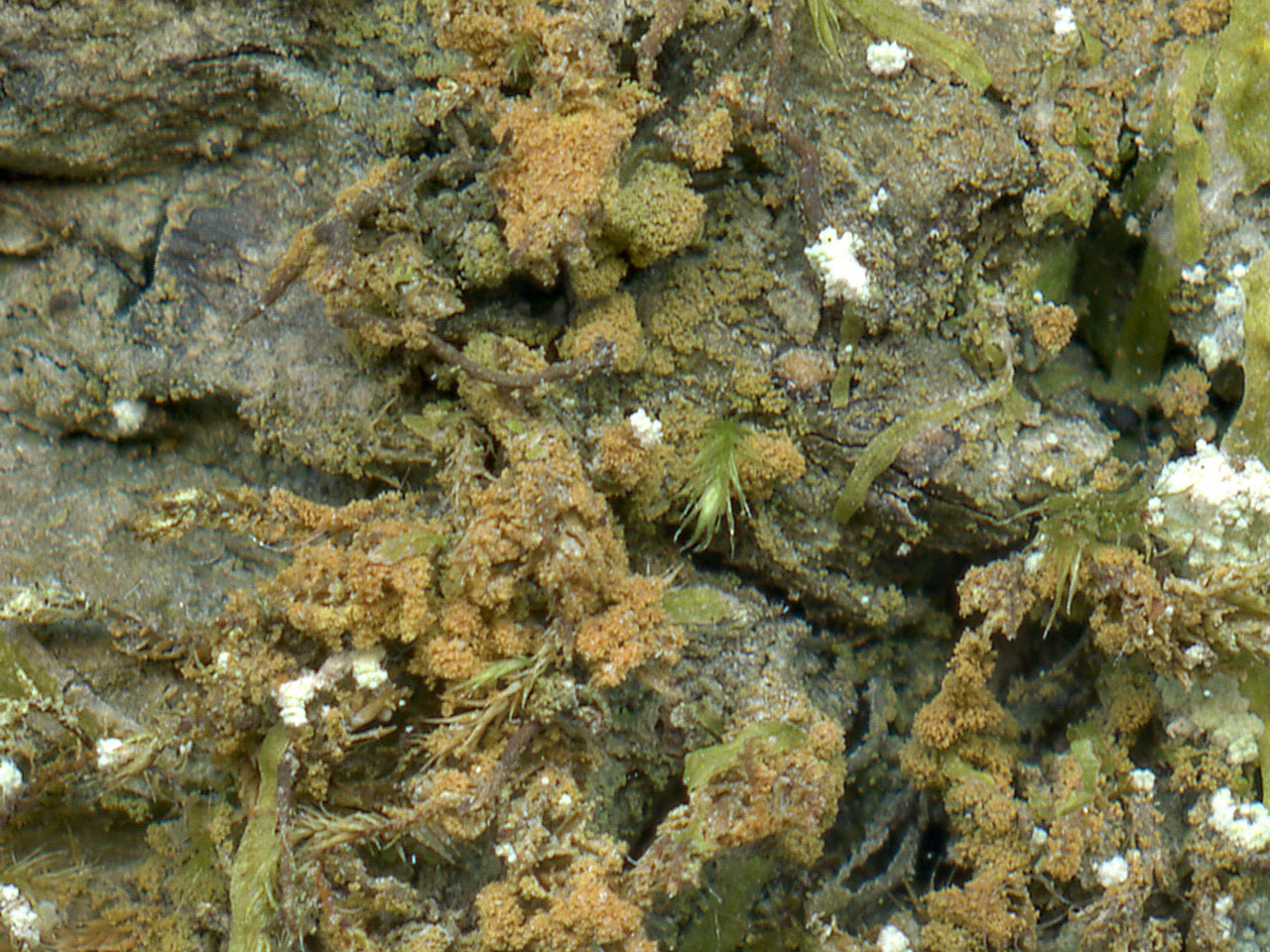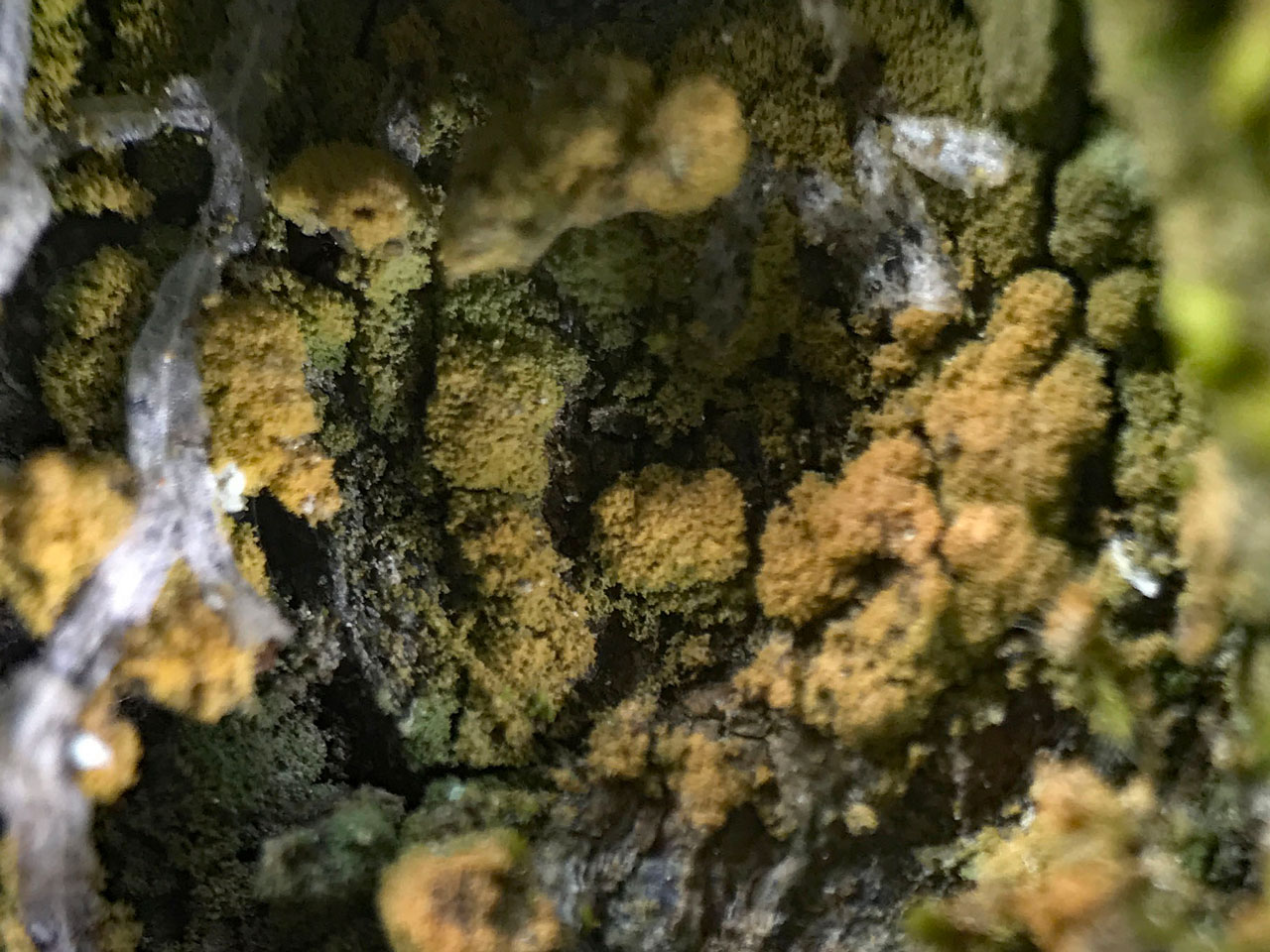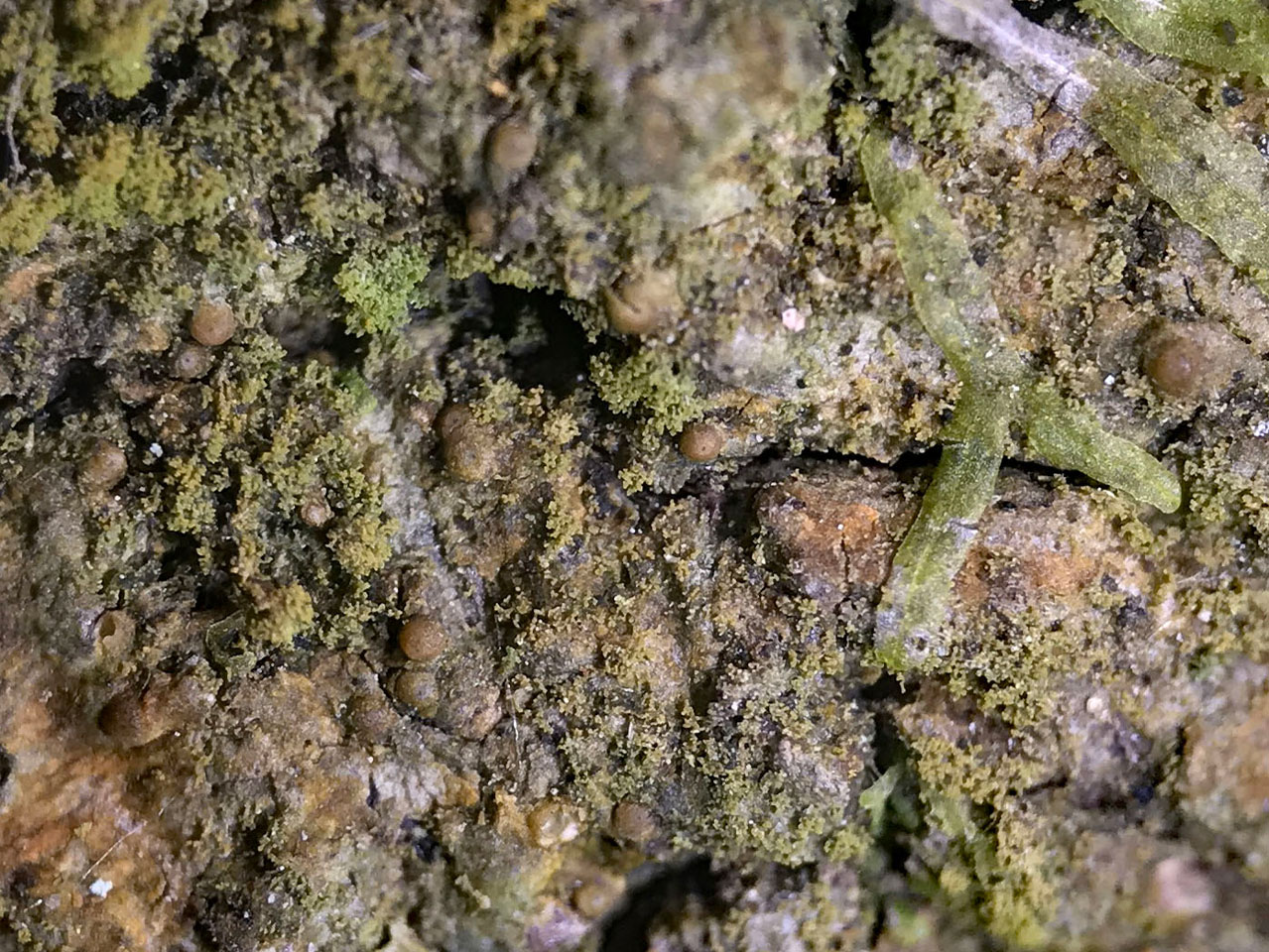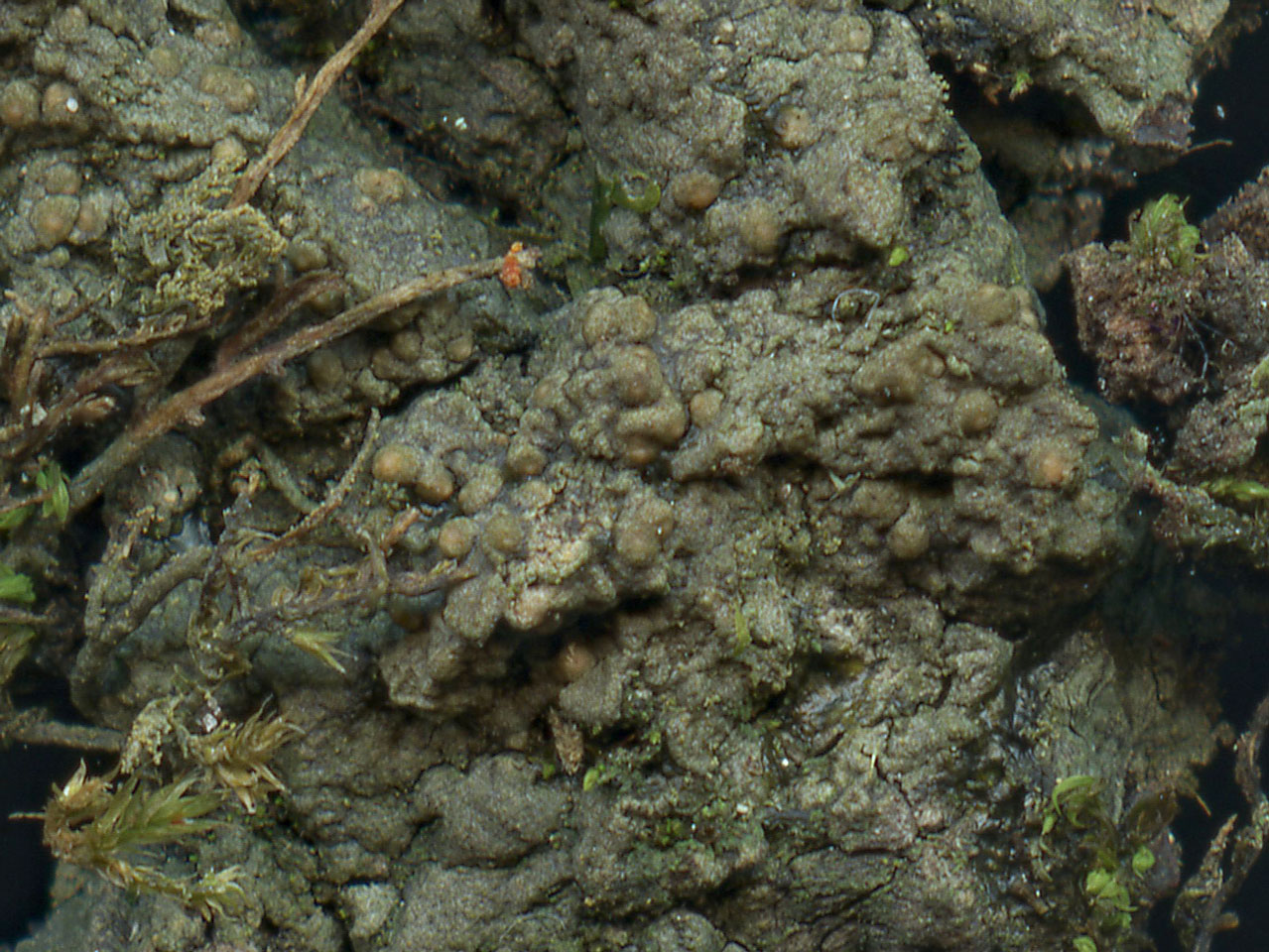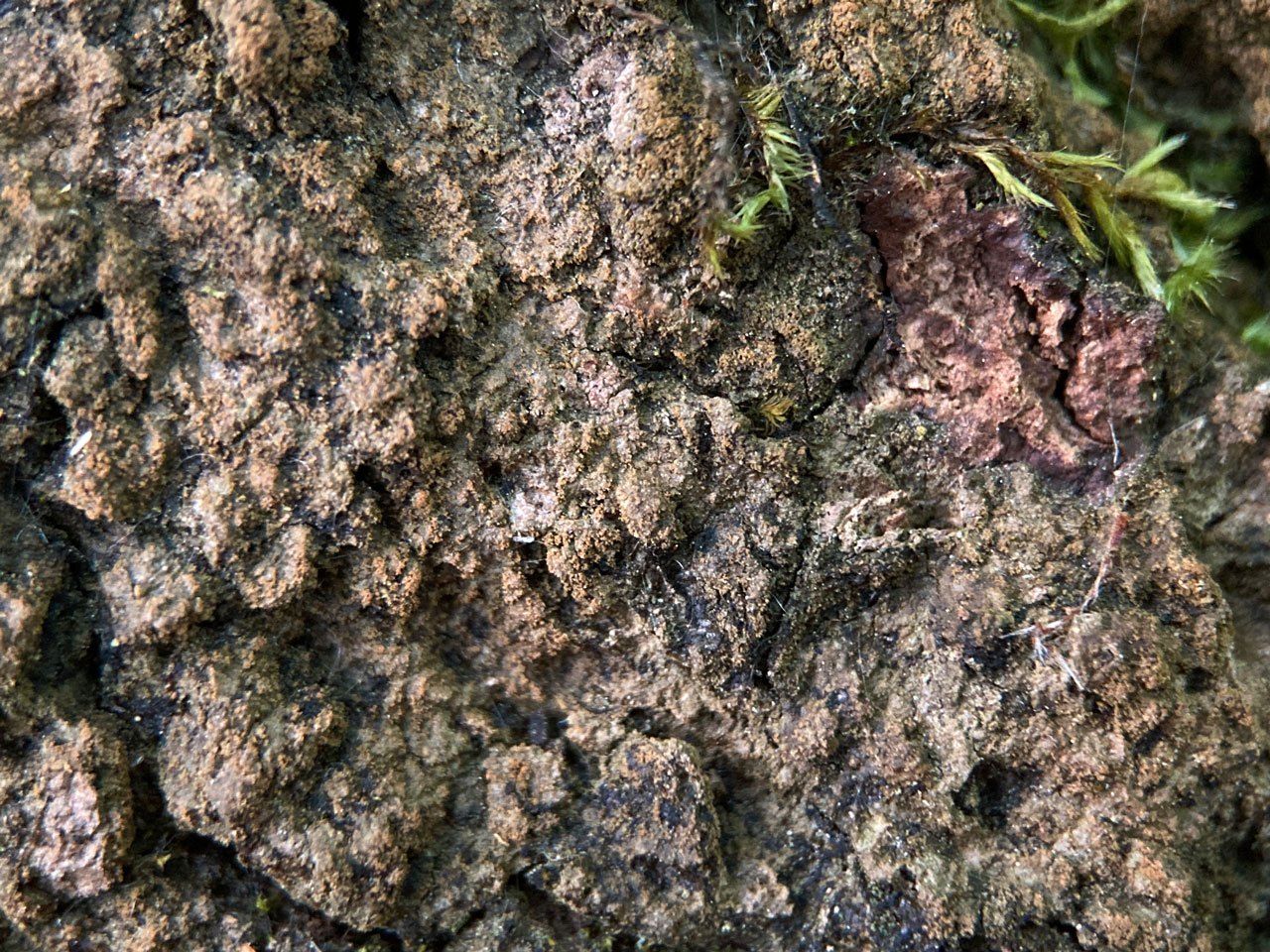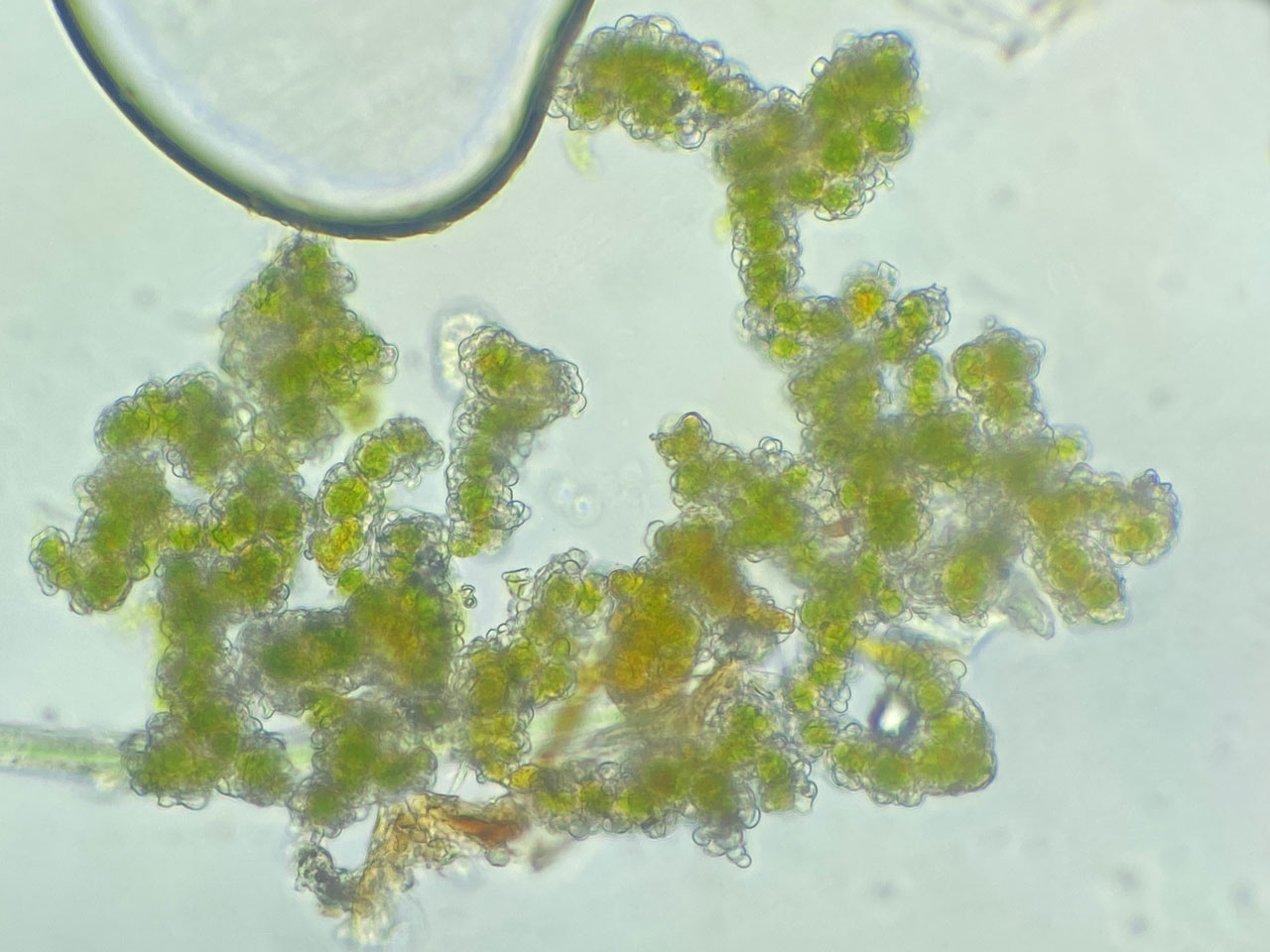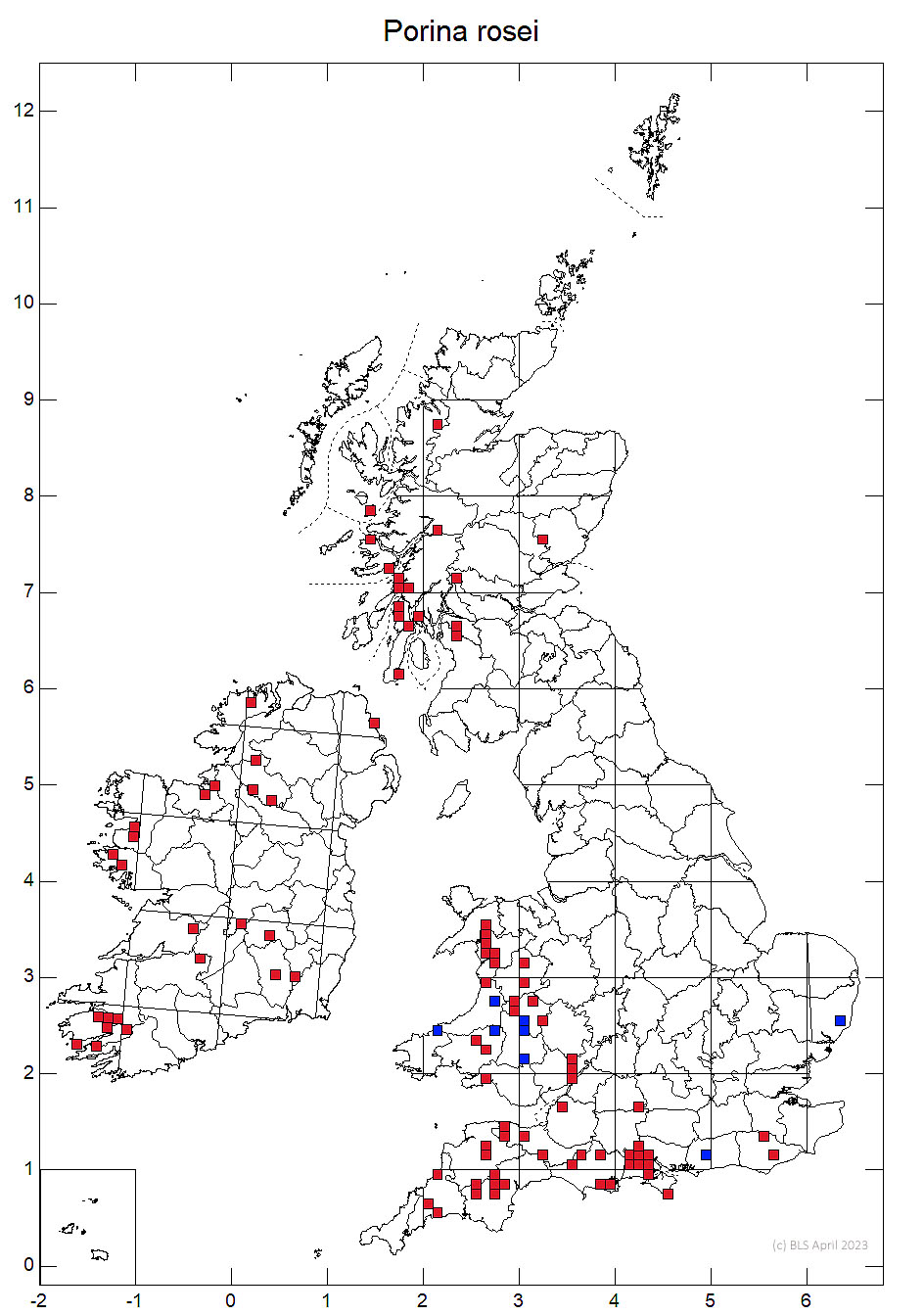A much confused taxa, due to the more frequent occurrence of a remarkably similar, at least when sterile, but unrelated lichen, Coenogonium nimisii, the existence of which was not suspected until revealed by sequencing. When fertile these species are very different; Porina rosei with dull orange perithecia part immersed in the thallus and C. nimisii, with bight yellow disks similar to Coenogonium luteum. Sterile, both have green to orange coralloid isidia which cluster into mounds of congested branches and grow in flushed base rich bark on veteran trees and sometimes on rock in humid habitats.
The isidia of Coenogonium nimisii are are less crowded, have a shiny, not matt, surface, are wider (20 – 55 μm diam.), have a compact and smooth clear cortex, several cells thick, and with up to four algal strands. In contrast those of P. rosei are more tightly packed, have a mat surface, are narrower (15–27 μm), have a loose clear cortex, with irregularly rounded sometimes slightly projecting cells, and usually containing only a single filament of the photobiont. Both species have also been confused with P. hibernica but this is distinct in its short, wide and uniformly dull orange isidia.
The distribution of the true Porina rosei is still being determined but it appears to be a rare species of ravines and old growth woodland.
Thallus superficial, thin, grey-green to grey-brown; isidia present, mainly bright orange-brown when fresh, green in deep shade, matt and soft looking, scattered to crowded, frequently becoming branched and coralloid, often forming mounds of congested branches, up to 0.18 mm high, mature branches 15–27 μm diam. (young isidia can some time be rather squat with isidia initials sometimes wider to c50µm wide), usually containing only a single filament of the photobiont, with a well-defined loose cortex which often forms a colourless surround to the branch, with irregularly rounded sometimes slightly projecting cells. Perithecia occasional, pale dull orange, sometimes the same colour as the thallus below, 0.36–0.4 mm diam., one quarter to one half immersed; involucrellum and exciple yellow (Porina-yellow). Ascus apex with a ring structure. Ascospores 3-septate, 22– 37 × 4–6 (–7) μm.
Occasionally fertile. Sterile specimens are similar to Porina hibernica, which typically has darker orange-brown, larger isidia with a poorly defined cortex, which form an even crust rather than mounds. The rare Porina atlantica differs in the thicker and taller more branched isidia, with a cortex which has numerous strongly projecting cells and the rough thallus surface with convex lumps. Most past British and possibly all Irish records are of sterile material now known to belong in Coenogonium, which is now published as C. nimisii. This looks similar, but the mounds of isidia are normally predominantly green, sometimes orange-ochre when well lit. The isidia have a shiny, not matt, surface, are wider (20 – 55 μm diam.), and have a compact and smooth clear cortex several cells thick and with up to four algal strands. This species is much more frequent than the true Porina rosei and grows on a wide range of tree species on base-rich bark as well as on mossy rocks. Enterographa brezhonega, which was thought to be parasitic on Porina rosei has not been recorded from the genuine species; all occurrences have been on the Coenogonium.
On base-rich bark of Fagus, Quercus and Taxus, or on base-rich rock, in old growth woodland and ravines.

Distribution not fully known but appears rare. Initially confirmed from S. England (New Forest, Hampshire), S. Wales (Wye Valley, Monmouth), Mid Wales (Radnorshire & Breconshire) N. Wales (Ceunant LLennyrch, Coed Crafnant & Afon Angell Merioneth) and Scotland (Den of Airlie, Angus). Also specimen from a damp granite boulder in S. Devon (Shaptor Wood, Dartmoor), originally identified as Porina atlantica was actually the true Porina rosei. Originally it was compared with a specimen of what is now Coenogonium nimisii, which was then thought to be true Porina rosei. The separation of old records has since been worked on and a full BLS map now produced, the concentration of records in Wales is partly due to Alan Orange knowing the true species well, but it also does appear to be more frequent there than it is along the south coast, where Coenogonium nimisii is definitely overwhelmingly more frequent.
Not assessed, the dominance of Coenogonium nimisii in the aggregate records of Porina rosei and Coenogonium confusum combined under Porina rosei previously, however, means the Near Threatened status applied to the name Porina rosei in the 2012 assessment should be inherited by C. nimisii not P. rosei. So far the fewer records confirmed as P. rosei suggest that this is a rare and threatened species and likely to be assessed as at least Vulnerable.
Orange, A., Cannon, P., Malíček, J., Sanderson, N., Coppins, B. & Simkin, J. (2021). Ostropales: Porinaceae, including the genus Porina. Revisions of British and Irish Lichens 4: 1-12.
Text by N A Sanderson, based Orange et al (2021)
